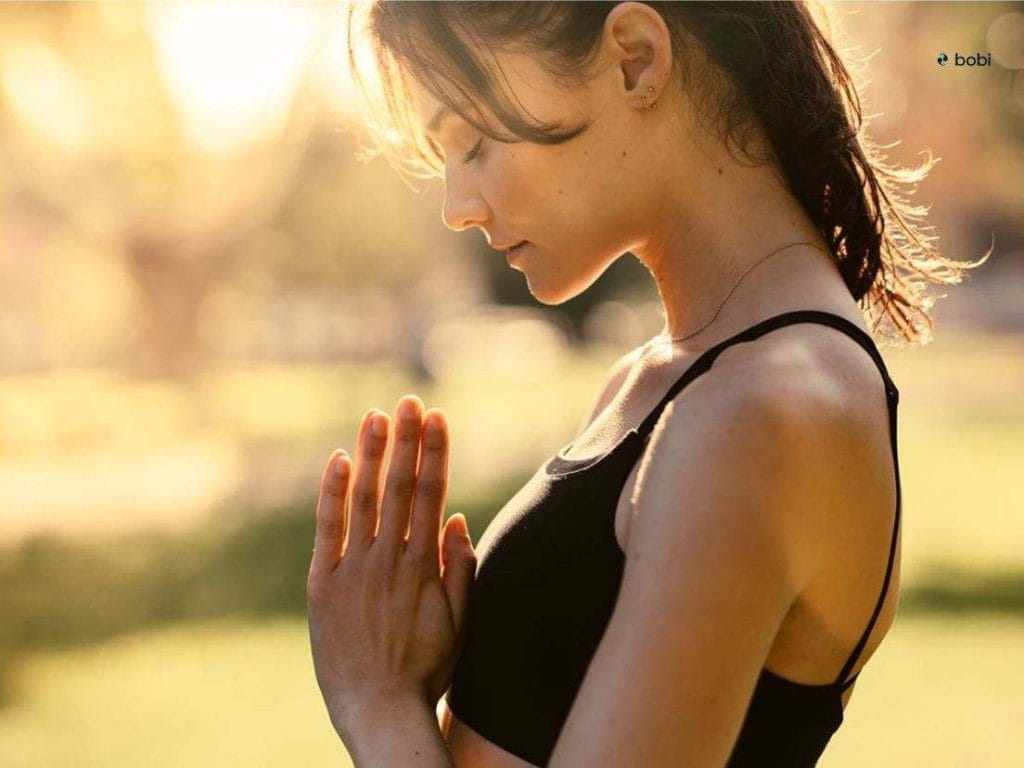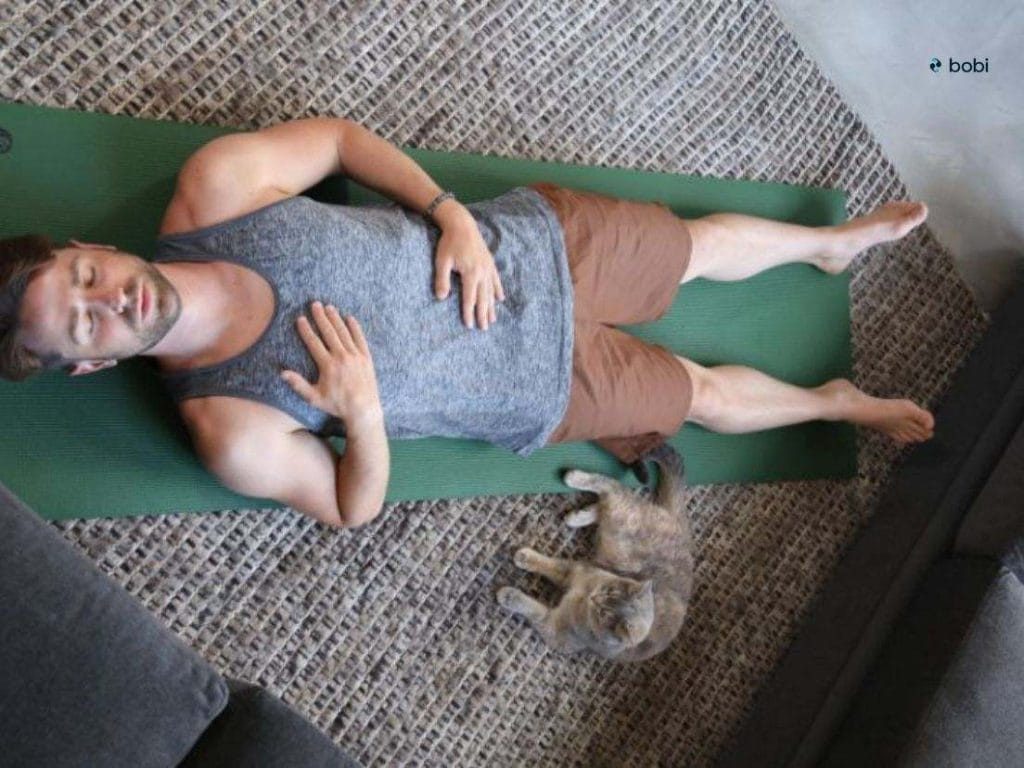
You have probably heard about taking “deep breaths” to relax someone during cases of extreme anxiety, but have you ever noticed the impact of slow breathing when attempting to calm somebody from a heightened state?
Given the current state of the science, it is impossible to deny the power of slow breathing in relieving stress and promoting physical and mental well-being.
There are, importantly, breathing techniques that focus on breathing intentionally that play a vital role in calming our body and mind.
After acknowledging the impact of breathwork on your body and mind, have you ever thought about the science of breathing? To understand this phenomenon, it is crucial to know the basics of your autonomic nervous system.
The nervous system consists of two parts:
The sympathetic nervous system, or the fight-and-flight mode, is our body’s reaction to external stress and other stimuli. It prepares our body to cope with that external stress.
Dr. Melissa Young, a breathing instructor and expert, explains this phenomenon as the worrying state of mind about the future and past leading to the release of stress hormones. The release of these stress hormones activates the sympathetic nervous system and prepares our body for fight-and-flight mode to cope with that stress.
The parasympathetic nervous system, on the other hand, is responsible for restoring the body to a relaxed state after a stressful period.
The sympathetic nervous system plays a vital role in preparing our body for stress conditions, but tapping back into the parasympathetic mode is also crucial. Otherwise, the long-term effects of these released stress hormones, such as cortisol, will negatively affect different body functions. And that is where these breathing techniques come into their own.
Breathwork induces positive feelings by activating the parasympathetic nervous system. It de-stresses our bodies and shifts us to a relaxed mode. It brings our heart rate and blood pressure back to normal and increases our energy and focus by increasing mindfulness and overall mental well-being.
Activating the parasympathetic system signals the body’s other systems to return to their relaxed state.
After learning the benefits and importance of a breathwork session, you might be wondering how and where to start. But don’t worry—we are here to provide you with some useful tips to begin your calming journey through your breath.
To begin your breathwork journey, create a peaceful environment, as this will be the first step in signaling your body to progress towards mindful breathing. This is important because it reduces external distractions and enhances your focus on your desired goal.
If you are new to experiencing conscious breathing, you can educate yourself and invest in some helpful learning material to be fully aware of different breathing techniques and methods. You can then decide which direction to start your journey.
Wear comfortable, loose-fitting clothes to experience uninterrupted breathing sessions. This will increase your overall comfort and promote relaxation.
Create a dedicated space for your breathing session by placing a yoga mat or a cushion and sitting comfortably to avoid any external distractions during longer sessions.
If you are a beginner, you may wish to use a timer or stopwatch to accurately practice inhalation and exhalation. It will train your mind and body to experience a variety of breathing techniques through a rhythmic process.
Keeping a journal or notebook handy is a golden rule if you want to record your observations. By doing this, you can analyze different breathing patterns and take notes. It will help you in deciding which techniques work best for you.
Pro tip: Write your before and after observations when you finish practicing conscious breathing.
Setting the stage for a successful breathwork experience requires creating a conducive environment that promotes relaxation, increased focus, and inner exploration. The following tips will enhance your overall quality of breathwork.
Following these basic tips and tricks can elevate your experience by maximizing the benefits of your breathing session.

Box breathing or square breathing is a simple technique that can be practiced anywhere and anytime. Another technique, the 4-7-8 breathing technique, is an intense practice that allows you to sleep peacefully.
Diaphragmatic, or abdominal belly breathing, is a convenient breathing technique. It is simple and engages the diaphragm, a powerful muscle located at the base of the lungs.
One way to monitor if you are engaged in abdominal breathing it to notice if your lower stomach expands as you take an inward breath.
This technique of 4-7-8 breathing is also easy to do and involves the inhale-hold-exhale period count in a ratio of 4-7-8.
This technique relaxes and soothes your mind and body, but if you have insomnia and are struggling with stress points, the best time to experience it is bedtime.
Alternate nostril breathing has proven to be a powerful tool for clearing the nose and clearing energy blockages. This breathing technique quickly relieves sinus symptoms by clearing your nasal passageways and reducing your stress levels.
Yoga practitioners incorporate a combination of poses and breathing exercises into their practice. There are two variations of alternate nostril breathing:
Once you have decided to start your breathwork session by selecting your desired technique of mindful breathing, it’s time to follow our easy, step-by-step guide.
Understanding your breathing baseline is important. Your basic rhythm, frequency, and duration of each breath will help you choose suitable breathing techniques to optimize the session’s benefits.
Observing your breath when inhaling, exhaling, and holding it for a specific period is important for an enriched breathing session. In this way, you will practice the conscious rhythm of breathing, and your body will be prepared for a specific breathing pattern to relax your muscles.
Introducing tactile prompts is a good idea for tuning yourself into a fruitful breathing session. It will train your breaths and guide you to breathe correctly by using mechanoreceptors in the dermis and epidermis of your hands.
Hand receptors are loaded with Meissner’s corpuscles, which are very sensitive to light touch and pressure and are present abundantly (about 3000) in the fingertips and palms of our hands.
Be seated or rest in a supine position while placing your hands on your abdomen such that the thumbs should be above the navel and fingers below the navel. Placing your hands in this position will feel even the slightest pressure on the belly to note your breathing consciously.
A golden rule to reaping maximum benefits out of this breathing ritual is to practice it daily.
It will allow your body to de-stress quickly by following a regular pattern of breathing. It will also train your mind to shift to the desired pattern and schedule of breathing.

When it comes to mindfulness and wellness, breathwork has been proven to be a useful tool for increasing mental and physical well-being, and practicing effective breathwork is no longer a difficult or unknown task.
It works for stress reduction and is known to increase focus and vitality. bobi is specially designed to enhance breathwork practices through real-time feedback and personalized guidance.
It allows you to understand your breathing patterns to maximize the benefits and provides instant feedback on your breathing patterns. It offers guidance to acquire your specific goals and needs.
If you are thinking of incorporating conscious breathing into your daily life, it will not require any extra effort.
bobi will make your task easy by training your subconscious mind, helping you activate your parasympathetic nervous system and thereby relieving any anxiety or stress you may be experiencing. The following are some of the ways to incorporate breathing into your daily routine.
This ritual doesn’t require a lot of time; you just have to wake up a few minutes prior to your typically waking time. Have bobi sit conveniently beside your bed to effortlessly engage in the early morning practice.
Utilizing your travel time, whether driving, walking, or using any other public transport, will reap the maximum benefits of practicing conscious breathing. Practicing at this time will help you prepare your body for the challenges and workload of the day.
Resting for short gaps between your working hours improves your concentration and productivity. These moments can be game changers if you implement focused breathing practice to support relaxation (and stress reduction).
Make a habit of taking a few slow breaths consciously before each meal. This will relax your body and help speed up your digestion by preparing your digestive system.
Sparing a few moments before bedtime to take slow breaths allows your brain to enter ‘sleeping mode’, helping you unwind, and resulting in calm and peaceful sleep.
Whether you are doing a regular workout or yoga, breathing will enhance your body-mind connection, helping you to experience the deeper effects of movement and workout.
It is normal to experience challenges during your breathwork session in the form of distractions and a lack of concentration.
Distractions and discomfort are common experiences when trying conscious breathing. Physical discomfort, persistent inner thoughts, or environmental discomfort are also common.
Inner thoughts should be observed to realize, and accept, how actively the mind is working. Inhibiting them completely is not possible, so watching and observing them and putting your focus back on breathwork is the key.
There is no single ideal breathwork technique that will achieve 100 percent results. Instead, try different breathing methods and techniques according to your body’s demands and needs.
In conclusion, a breathwork journey can empower you and transform your life. By following this easy, step-by-step guide, you can cultivate the maximum benefits of your breathwork journey.
The key is to go slowly, listen to your body’s needs, and be patient while adjusting to the most suitable method or technique. By adopting a consistent breathing ritual with an innovative tool like bobi, you will experience greater balance, clarity, and vitality. So, let’s embrace the journey of mindful breathing and discover its profound effects and power.
To start breathwork, first find a quiet place, sit or lie down in a comfortable and relaxed position, and focus on your breath.
Now, inhale slowly through your nose, hold it for a few moments, and then exhale through your nose. Gradually explore different breathing techniques, such as diaphragmatic breathing or counting your breaths.
The easiest breathing technique for most beginners is diaphragmatic breathing. Place one hand on your abdomen while the other one on your chest.
Start by inhaling slowly through your nose to raise your belly when your lungs are filled with air. Then exhale slowly through your nose, allowing relaxation of your belly.
Effective breathwork connects the mind and body and allows the body to heal and relax. This influences our nervous system by reducing stress levels and promoting physical, mental, and emotional well-being.
Initially, 5-10 minutes of breathing sessions each day is beneficial. Begin with a shorter duration and gradually increase it as you get comfortable with the practice.
Stay updated on what's happening at bobi, and all things breathing, anxiety and mental wellness.